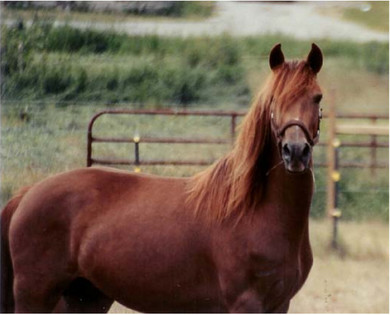
The Most Popular Horse Breeds Of 2019
Equestrian Advice & Guides General Equestrian
Build your business profile for FREE and expose your services to thousands of potential clients!
Create my profile now!
“Justin Morgan had a Horse” was written by the famous equine-loving author Marguerite Henry in 1945. It details the creation of the Morgan horse in colonial America and the schoolteacher who started one of America's oldest horse breeds with a legendary stallion. It is a “feel good” success story, written for children with an equine twist. If the Mustang is the horse of the west, then the Morgan is the horse of New England.
Besides Justin Morgan, the heroic “figure” in the story is a horse called Figure. He was a small dark bay, standing at about 14 hands tall of a questionable pedigree that had sound confirmation, endurance, agility, hardiness and an attractive profile. He was a legend in not only trotting races but could outpull and outrun other horses. Given the time and location, he is most likely a mixture of grade, Thoroughbred, Arabian and potentially a gaited breed such as the Narragansett Pacer (a common colonial breed now extinct but responsible for today's Saddlebred and Standardbred). Justin saw the potential in the horse and began breeding him to mares across the upper east coast of the United States. His genetics always dominated and influenced his offspring intensely. For almost 30 years Figure imprinted his qualities in offspring that would later result in today's Morgan horse.
Figure's offspring would carry over 1,000 cavalrymen from Vermont alone to battle in the American Civil war. Later, the breed carried some of General Custer's men into the Battle of Little Bighorn, making the Morgan horse a quickly respected American icon instead of just a famous line of horses from the North East. Most likely to prevent the disappearance of the horse like the Narragansett Pacer, in 1905 a United States Department of Agriculture associated farm was set up to preserve the pedigree of the original Morgan horse. After the Civil war, the breed was crossed with taller horses and cross-breeding was more common than establishing a base for the “original.” This farm promoted the traditional sturdy little horse into the 20th century and the Morgan horse began to flourish beyond field and military work and made its way into the show arena.
Selective breeding refined the Morgan and exemplified its harness abilities and became a flashy light cart horse with it's erect, crested neck and headset, expressive face and exceptional trot. They were once the carriage horse of the White house, pulling presidential carriages in parades and other events. Today Morgans are strong opponents in competitive driving, dressage, trail, western, and endurance competitions beyond special classes and shows that are dedicated to the breed.
Primarily, Morgans stand between 14.1 and 15.2 hands tall and while no colors are specifically recognized by the American Morgan Horse Association, they are most commonly dark bay or chestnut. Morgans should have a well-angulated shoulder for a higher neck set, a strong chest, small ears, large, expressive eyes, and depending on the breeding and sex, a deep barrel and thicker than average throatlatch. Overall their body is compact- compact back, dock, neck and chest but with a long croup and shoulders. Modern types generally weigh between 900 and 1,200 pounds.
Sometimes you will hear people refer to some Morgan horses as a Lippitt. Lippitt is a family of horse underneath the Morgan horse that refer to, and preserve the very old line of the breed. Contemporary Morgans are more refined, slightly less stocky compared to the iconic stud, figure. As the demand and fashion for them continued to become showier, with expressive, animated gaits and a lighter build, Lippitts remain in confirmation of the original lineage.
In the early history of the Morgan horse, they were admired by many New Englanders because they were well suited to their work and adaptable to their surroundings. These qualities made Morgans extremely easy to take care of. This quality of the Morgan horse remains the same. With their size structure as well as their keen intuition, they are found in many different disciplines and have been responsible for teaching young equestrians the principles of riding. Once a great American Cavalry horse, Morgans are now a great beginner's horse, and also the official state animal of Vermont!
